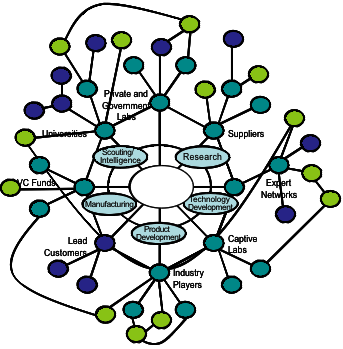Why BNB Chain Hardware Wallets Are a Game-Changer for Portfolio Management
Something felt off about managing crypto portfolios solely on software wallets. Seriously? Juggling tokens across multiple blockchains, while trying to keep security tight, often felt like spinning plates on a unicycle. I mean, you want convenience, but also peace of mind. That’s where BNB Chain hardware wallet support steps in, shaking things up in a way some folks might not fully grasp yet.
Initially, I thought that hardware wallets were just for hoarding Bitcoin cold storage, you know? But then I realized that with BNB Chain’s expanding ecosystem, and the rise of DeFi, hardware wallets now have to handle much more — like seamless multi-chain interactions and portfolio management. The tech’s no longer just about locking down private keys offline; it’s evolving toward becoming your on-the-go command center for assets.
Wow! The really cool part is how this trend aligns with what many users have been craving: robust security without sacrificing access to DeFi and Web3 apps. If you’ve ever fretted over seed phrases or dreaded the thought of losing wallet access, this is a breath of fresh air. But wait—there’s more to this story that’s worth unpacking.
Okay, so check this out—hardware wallets supporting BNB Chain aren’t just isolated devices anymore. They integrate with portfolio management tools that can track your entire holdings across different blockchains. That means you can see your BNB, BEP-20 tokens, and other assets all in one place, without hopping through different apps or risking exposure via hot wallets. On one hand, this sounds like a dream come true for every DeFi enthusiast out there; though actually, it raises questions about user interface complexity and device compatibility.
Here’s the thing. Not all hardware wallets play nice with BNB Chain by default, especially when you dive into multi-chain environments. For example, some wallets primarily focus on Ethereum-compatible chains but could lack optimized support for BNB Chain’s nuances, including its speed and lower fees. That’s why devices and software that explicitly support BNB Chain’s hardware wallet integration have a leg up in the ecosystem.
Another layer is portfolio management. At first, I underestimated how messy it can get—tracking assets scattered across Binance Smart Chain, Ethereum, Polygon, and beyond. Imagine juggling dozens of tokens, each with different transaction histories and staking setups. It’s overwhelming. But when you combine hardware wallet support with portfolio dashboards designed for multi-chain visibility, things start to click into place.
Hmm… I recall testing a few setups and feeling frustrated by how clunky some interfaces were. The data synchronization lagged or required multiple manual refreshes. Honestly, that bugs me. But I found that using wallets integrated with services like binance wallet multi blockchain solutions smooths out a lot of that roughness. They pull real-time info across chains and present it cleanly, while your keys stay safely offline.
Now, let me take a slight detour. (Oh, and by the way…) the hardware aspect is crucial here. Hot wallets get hacked all the time—phishing scams, malware, you name it. Hardware wallets create a fortress by storing private keys offline, preventing unauthorized access even if your computer is compromised. That added security layer is non-negotiable, especially when handling significant BNB Chain assets.
On the flip side, hardware wallets aren’t perfect. They can be pricey and sometimes intimidating for newcomers. Plus, the process of managing firmware updates or ensuring compatibility with the latest BNB Chain features can be a bit of a hassle. But given the trade-off between security and convenience, I’d say it’s a very very important investment for serious users.
Speaking of investments, portfolio management tools that sync with hardware wallets now offer features that go beyond balance tracking. Some include analytics for gas fees, staking rewards, and even DeFi yield farming positions across chains. This holistic view is a game-changer. You start seeing your crypto holdings not just as isolated tokens but as interconnected parts of a broader financial strategy.
So why does this matter for the average Binance ecosystem user? Because the days of siloed wallets and manual tracking are fading fast. DeFi is growing wild, and users want tools that can keep pace without sacrificing security. That’s why embracing hardware wallets with native BNB Chain support, coupled with multi-chain portfolio dashboards, feels like stepping into the future.

Still, I can’t help but wonder how user education will keep up. Hardware wallets and multi-chain management sound great, but if most folks don’t understand how to use them properly, there’s a risk of mistakes—like mismanaging addresses or falling for phishing. It’s a bit of a double-edged sword, though actually, the right community resources and intuitive interfaces can bridge that gap.
In my experience, the best approach is to start small—experiment with hardware wallets on BNB Chain using test assets before moving your main holdings. And when you do, leveraging platforms that support binance wallet multi blockchain features can make your life way easier. They help unify your experience without compromising the security you need.
To wrap this up (but not really), the fusion of BNB Chain hardware wallet support with advanced portfolio management tools is reshaping how we interact with crypto. It’s not just about storing tokens; it’s about managing a diversified, multi-chain financial portfolio with confidence and clarity. And while there are kinks to iron out, the momentum is undeniable.
Yeah, I’m biased, but seeing this evolution firsthand makes me hopeful. It’s like going from scribbling balances on a napkin to having a high-powered dashboard that’s both secure and smart. If you’re deep into the Binance ecosystem and craving better control over your assets, this is definitely a direction worth exploring.


